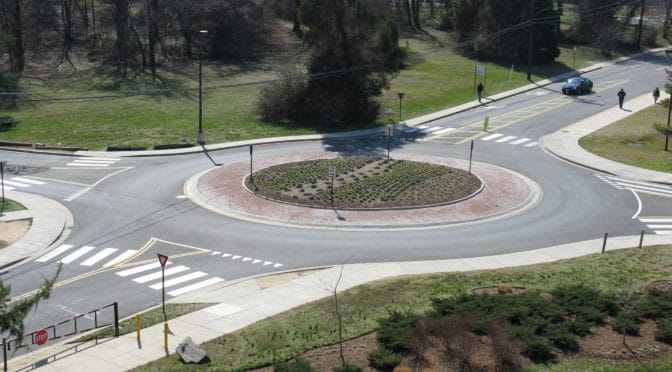More Poor Richard, Part 9
by Dr. Mark David Major, AICP, CNU-A, The Outlaw Urbanist contributor
Courteous Reader,
I attempted to win your favor when I wrote my first Almanac for Architects and Planners, in the name of the public good and professional betterment, by way of earning some profit and a wife. I am gratified by your expression of encouragement for my tireless efforts dedicated to these aims. Alas, my circumstances still find me exceedingly poor and, unluckily, exceedingly wifeless. I am required to earn some profit to address both problems whilst now addressing a third, namely testing the proposition that insanity is “doing the same thing over and over again and expecting different results.” To satisfy my own particular brand of insanity, I have written more proverbs and whimsical sayings for your benefit and, hopefully, my own.
As before on The Outlaw Urbanist, I write this new Almanac in increments of ten, according to the dictates of Moses and the Almighty. However, once published as an Almanac for Architects and Planners, the proverbs and witticisms were gathered into a number equal to the days of the week, after being reliably informed that both seven and ten are sacred numbers. My desired requirement for a wife is sufficient motive to write this new Almanac in the hope it will find your favor and retweets as a means of demonstrating the usefulness of my continued efforts but also your charity to this sane Friend and poor Servant,
Richard
On History
81. The media always seems to report about the tip of the wrong iceberg.
82. History is always expanding, never contracting.
83. History is inevitable but nothing in history ever was…
84. Stable states will destabilize over time.
85. Unstable states tend to remain unstable until stabilized over time into recognizable patterns.
86. Stabilized patterns persistent through time tend to persist until destabilized.
87. The present always views the past with arrogance and the future with ignorance.
88. Ignorance of the past leads to its repetition.
89. Arrogance about the future condemns those who have to live in it.
90. History is never permanent, always in transition.
Issue 10 of More Poor Richard for Architects and Planners cometh soon!

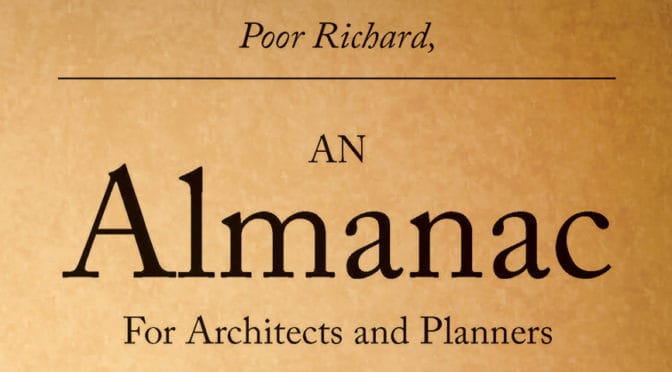
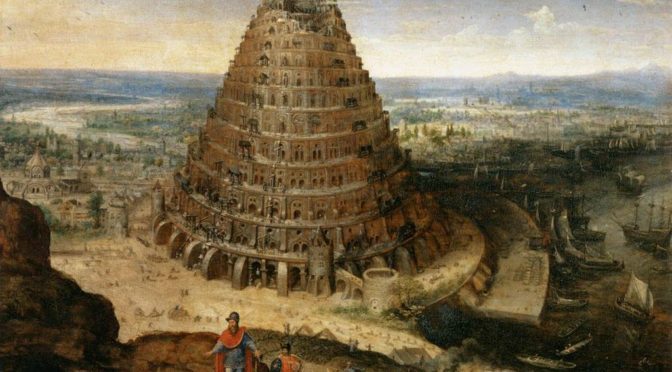
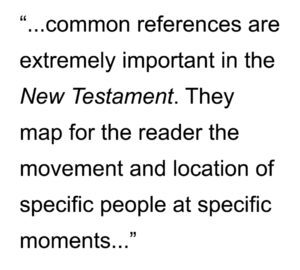 These common references are extremely important in the New Testament. They map for the reader the movement and location of specific people at specific moments, most usually Jesus and his Apostles, or in recounting past events/parables during the course of the primary action of a specific text. More than a third (36%) of the common references are a non-possessive, non-relational subject or object (direct or indirect) of a sentence. (e.g. “The city was…” or “…a city”). Again, this often occurs after a proper name was previously used in the text (i.e. we already know where the action is taking place). Finally, only eleven percent (11%) of the common references in the New Testament are possessive nouns (e.g. “the priests of the city”). These possessive nouns are often important for denoting differences; for example, between insider (e.g. resident or citizen) and outsider (e.g. visitor or stranger), the powerful (e.g. priests) and the powerless (e.g. poor), or other such relationships presented as a dichotomy in the narrative.
These common references are extremely important in the New Testament. They map for the reader the movement and location of specific people at specific moments, most usually Jesus and his Apostles, or in recounting past events/parables during the course of the primary action of a specific text. More than a third (36%) of the common references are a non-possessive, non-relational subject or object (direct or indirect) of a sentence. (e.g. “The city was…” or “…a city”). Again, this often occurs after a proper name was previously used in the text (i.e. we already know where the action is taking place). Finally, only eleven percent (11%) of the common references in the New Testament are possessive nouns (e.g. “the priests of the city”). These possessive nouns are often important for denoting differences; for example, between insider (e.g. resident or citizen) and outsider (e.g. visitor or stranger), the powerful (e.g. priests) and the powerless (e.g. poor), or other such relationships presented as a dichotomy in the narrative.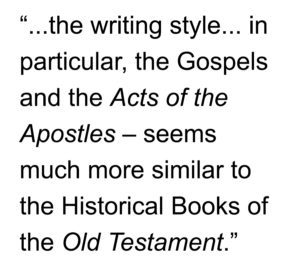 Nearly three hundred (300) or forty-two percent (42%) of the common references to the city in Old Testament are nouns denoting the location/direction of a specific person in space. However, the Historical Books deploy these common references at a greater frequency than the rest of the Old Testament. Over forty-five percent (45%) of the common references to the city in the Old Testament occur in the Historical Books. Finally, about thirty-one percent (31%) of the common references to the city in the Old Testament are a non-possessive, non-relational subject or object (direct or indirect) of a sentence. What this suggests, whatever you might believe, is the writers of the Gospels and Acts believed they were writing histories and adopted the appropriate writing style for that endeavor drawing upon the model of Old Testament texts.
Nearly three hundred (300) or forty-two percent (42%) of the common references to the city in Old Testament are nouns denoting the location/direction of a specific person in space. However, the Historical Books deploy these common references at a greater frequency than the rest of the Old Testament. Over forty-five percent (45%) of the common references to the city in the Old Testament occur in the Historical Books. Finally, about thirty-one percent (31%) of the common references to the city in the Old Testament are a non-possessive, non-relational subject or object (direct or indirect) of a sentence. What this suggests, whatever you might believe, is the writers of the Gospels and Acts believed they were writing histories and adopted the appropriate writing style for that endeavor drawing upon the model of Old Testament texts.
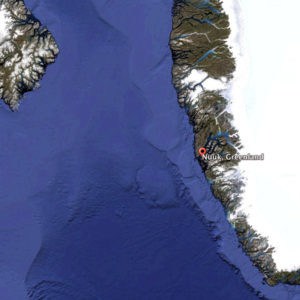
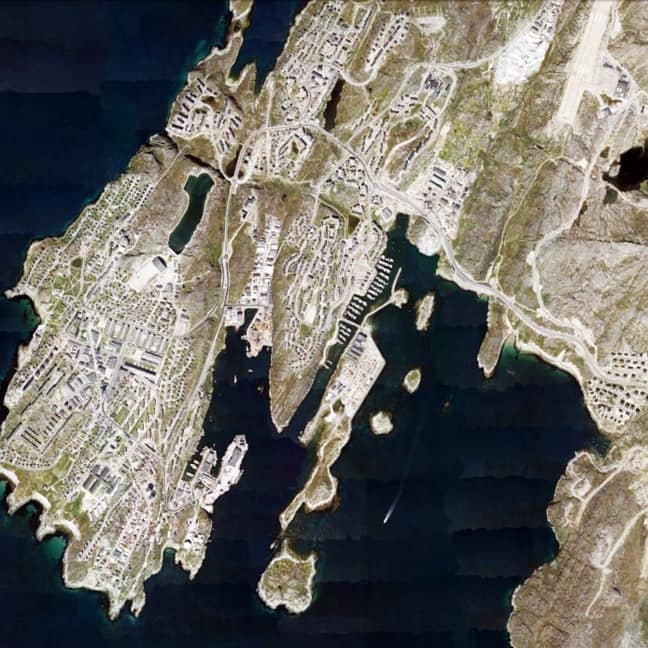
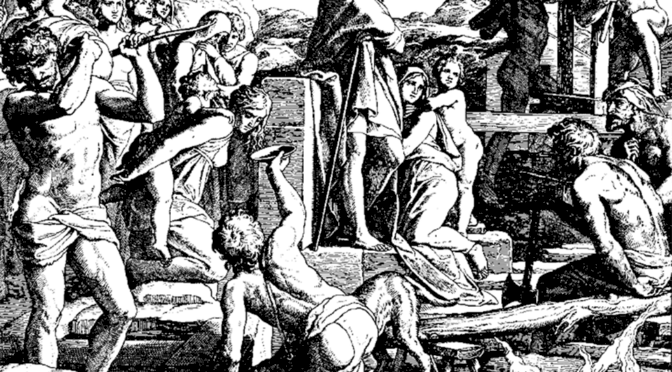
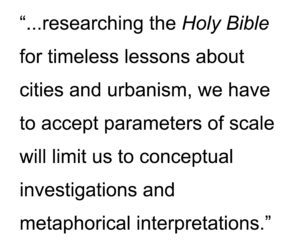 The ancient concept of a city is remarkably different to our modern one due to radical differences in population. World population is generally estimated at between 15-60 million people before the 4th century AD height of the Roman Empire. World population today is more than 7 billion people or approximately 100-500 times greater, depending upon scholarly estimates for ancient populations. The modern megalopolis would have been unimaginable to our ancient ancestors. We also have to accept the limits of translation. Biblical texts have been translated time and time again over the ages. What we might find in researching the Holy Bible will be heavily dependent upon how these ancient texts were translated in the past, hereby affecting our interpretation of the material today. This article initially relies upon the King James (KJB) version of the Holy Bible but also uses the Catholic New Jerusalem Bible (NJB) (translated “directly from the Hebrew, Greek or Aramaic” according to the Roman Catholic Church) as a double-check for translation issues. It is likely this is insufficient. However, it is a good place to start if we actually hope to say anything on the subject during a single lifetime.
The ancient concept of a city is remarkably different to our modern one due to radical differences in population. World population is generally estimated at between 15-60 million people before the 4th century AD height of the Roman Empire. World population today is more than 7 billion people or approximately 100-500 times greater, depending upon scholarly estimates for ancient populations. The modern megalopolis would have been unimaginable to our ancient ancestors. We also have to accept the limits of translation. Biblical texts have been translated time and time again over the ages. What we might find in researching the Holy Bible will be heavily dependent upon how these ancient texts were translated in the past, hereby affecting our interpretation of the material today. This article initially relies upon the King James (KJB) version of the Holy Bible but also uses the Catholic New Jerusalem Bible (NJB) (translated “directly from the Hebrew, Greek or Aramaic” according to the Roman Catholic Church) as a double-check for translation issues. It is likely this is insufficient. However, it is a good place to start if we actually hope to say anything on the subject during a single lifetime. The first city mentioned in the Holy Bible is Enoch, built by Cain and named after his son (NJB Genesis 4:17. “Cain had intercourse with his wife, and she conceived and gave birth to Enoch. He became the founder of a city and gave the city the name of his son Enoch”). Some argue Cain’s Enoch is the ancient Mesopotamian city of Uruk, which was famous as the capital city of Gilgamesh, hero of the Epic of Gilgamesh. However, it is more generally accepted that Uruk is the biblical Erech, said to be founded by Nimrod, who was the great-grandson of Noah. In any case, considering he famously murdered his brother Abel (KJB Genesis 4:9 “Am I my brother’s keeper?”), Cain represents a rather inauspicious father figure for city builders and planners. One could argue (tongue-firmly-in-cheek), this represents the original sin of the planning profession for which they still seek amends to this day as modern planners explicitly desire to be their “brother’s keeper”.
The first city mentioned in the Holy Bible is Enoch, built by Cain and named after his son (NJB Genesis 4:17. “Cain had intercourse with his wife, and she conceived and gave birth to Enoch. He became the founder of a city and gave the city the name of his son Enoch”). Some argue Cain’s Enoch is the ancient Mesopotamian city of Uruk, which was famous as the capital city of Gilgamesh, hero of the Epic of Gilgamesh. However, it is more generally accepted that Uruk is the biblical Erech, said to be founded by Nimrod, who was the great-grandson of Noah. In any case, considering he famously murdered his brother Abel (KJB Genesis 4:9 “Am I my brother’s keeper?”), Cain represents a rather inauspicious father figure for city builders and planners. One could argue (tongue-firmly-in-cheek), this represents the original sin of the planning profession for which they still seek amends to this day as modern planners explicitly desire to be their “brother’s keeper”.